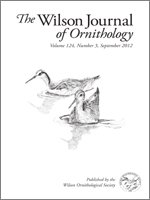We studied species, functional groups, and habitat preferences of birds in five classes of agroforestry systems: agroforests, animal agroforestry, linear agroforestry, sequential agroforestry, and crops under tree cover in Tabasco, Mexico. Sampling sites were >2 km from natural forest fragments. Observations were made at 38 sites using 30-min point and transect counts in the morning and afternoon in the rainy season, season of northern winds, and dry season from June 2008 to May 2009. We observed 3,551 birds, which were assigned to 102 species: 72 were resident and 30 were migratory species. Overall efficiency of sampling was 82.4% and varied from 68.7% in linear agroforestry to 81.5% in animal agroforestry. Total species richness varied from 43 in sequential agroforestry to 64 in animal agroforestry. Species richness and Shannon diversity indices revealed no differences among agroforestry classes. Bird communities in animal agroforestry, linear agroforestry, and sequential agroforestry had similar species compositions, as did agroforests and crops under tree cover. Birds in all agroforestry classes were mainly forest generalists, although specialists of open areas were common, particularly in animal and sequential agroforestry. Only one individual of a forest specialist species was observed during sampling. Migrant species were mostly forest generalists, but some open area specialists occurred in animal agroforestry. Resident birds were distributed over all foraging guilds in all agroforestry classes, whereas migrants were mainly foliage-gleaning insectivores. Foraging guilds had different relative abundances among agroforestry classes. Structural diversity of agroforestry classes did not seem to influence bird species richness. Forest specialist species were virtually absent in agroforestry classes, but the avifauna in agroforestry is diverse and valuable in itself.
How to translate text using browser tools
1 September 2012
Species, Functional Groups, and Habitat Preferences of Birds in Five Agroforestry Classes in Tabasco, Mexico
Hans Van Der Wal,
Beatriz Peña-Álvarez,
Stefan L. Arriaga-Weiss,
Salvador Hernández-Daumás
ACCESS THE FULL ARTICLE





